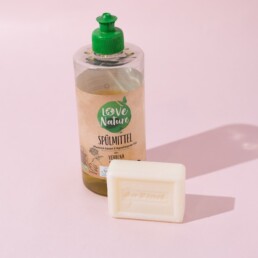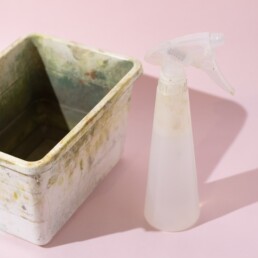What is the best way to clean the printing block and roller after printing? Do I need special cleaners? Depending on which ink you use, cleaning is quite easy. Water-based inks are generally easy to clean, so they are particularly suitable for schools and other educational institutions. If you prefer to work with oil-based ink, you can choose between water-soluble and non-water-soluble.
Oil based and washable
The best of both worlds, as I like to say. Some companies have special inks on offer that are ideally suited to lino printing, print perfectly and deliver brilliant, silky glossy print results. Sounds too good to be true? My favorite since the beginning has been these: Caligo Safe Wash Relief Inks by Cranfield Colours. hey asked me to be their printmaking ambassador for a reason because I have been recommending their inks to everyone for 3 years now with 100% conviction.
Other companies also have oil based and water soluble inks available, for example: Speedball Art Professional Relief Ink, Charbonnel Aqua Wash and many more. Just Google “relief ink oil based washable/water soluble” yourself and you should quickly find what you are looking for. So far I have tested Charbonnel and Cranfield myself but I did not like the consistency of Charbonnel

Soap and water
So, how do you clean the oil-based water-soluble inks? With soap and water. I like to use washing-up liquid or curd soap, whereby curd soap cleans a little more thoroughly. Some rollers are not as easy to clean, then you can use a little baby oil or vegetable oil and dissolve the residue.
I clean all my devices at my work table. Put the block on an old cloth, then the back side is protected – because this should not get wet under any circumstances. Otherwise, the burlap incorporated on the back will cause the block to warp, and that can hardly be undone and is really a hindrance for future prints!

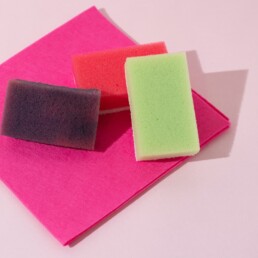
Now I get some fresh water in a (by now very dirty) small plastic box, dip a dishwashing sponge into it and wring it out again. Then I put a dash of dishwashing liquid on it, spread that on the sponge until it gets foamy. You can dissolve the ink on the lino block, mixing plate and roller beforehand with a little water from the spray bottle. Then you just rub the sponge over the block and all the ink comes off. Wipe it off and let it dry, done. It really is that simple. The blocks will no longer become completely clean, but that doesn’t matter, as long as the printing surface is!
Useful tools
Gloves are useful in any case – whether dishwashing glove, latex or nitrile you decide. I personally like nitrile because the gloves do not tear and fit comfortably tight. You should wear some to protect your nails from stains.
If you use oil-based inks that are not water-soluble, then vegetable oil is your best friend – you can dissolve the ink with it. Also useful is a stronger cleaner, such as Zest-It! This does not smell bad and gets off stains from rollers easily (unfortunately not available in Germany).
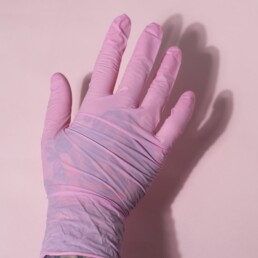


Summary
So, if you want to make it easy for yourself and achieve fantastic printing results, try one of the inks mentioned. I work exclusively with the Caligo Safe Wash Relief Inks from Cranfield, because they are easy to buy in Germany and many other countries.
More useful products can be found in this article: Linocut Printing Tools for Beginners
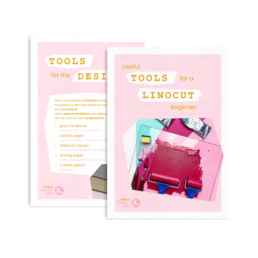
Linocut Tool Guide
Still unsure which tools and products you need for your lino printing starter kit? Just download my guide with product recommendations for linocut beginners – on 6 pages I list all the materials and tools I need to make my colorful prints – and you can do it too!

